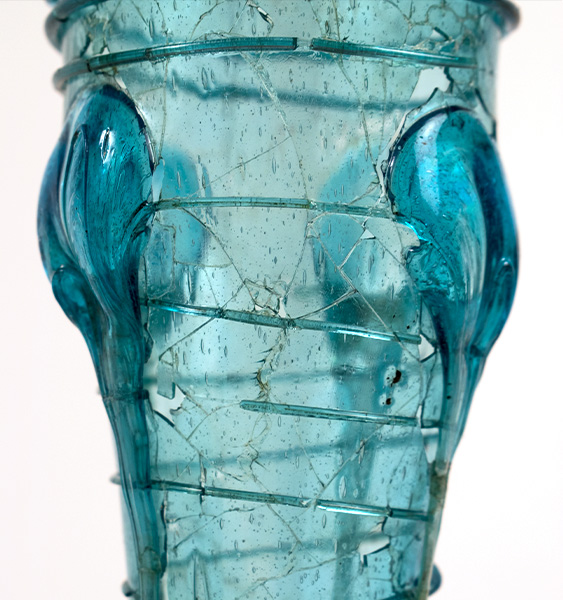Valsgärde
Valsgärde burial ground
Valsgärde burial ground is situated about three km north of Gamla Uppsala. Archaeologists from Uppsala University excavated the site during several periods between 1928–1952. The burial ground at Valsgärde became famous primarily because of the 15 unlooted boat graves found there. Several of the graves contained beautiful and fascinating objects. One example is the unique helmets which are of a type known from only a few surviving examples in the whole world. Vikingafenomenet (‘The Viking Phenomenon’) research project is currently underway, which has the collections from Valsgärde as its starting point.
The excavations 1928-1936
When the burial ground was discovered in 1926, boat graves were already known from elsewhere in the region. As early as 1881, a large boat burial ground at Vendel Church in Uppland had been investigated. It was this discovery that gave the ‘Vendel period’ its name. Under the direction of Professor Sune Lindqvist, the burial ground at Valsgärde was excavated between 1928–1936. The excavations were carried out very carefully and the locations of all finds, including over a thousand rivets from each boat, were documented. The archaeologists excavated eight boat graves from the Vendel and Viking periods.
The excavations 1946-1952
After the end of the Second World War, the excavations at Valsgärde burial ground resumed, now under the direction of Bertil Almgren and Bengt Schönbäck. During this period, the remaining six boat graves were excavated as well as a large number of cremation graves. Many of the most fragile items were extracted together with the surrounding soil, which was then carefully brushed away in the laboratory. As an example, a large drinking glass from one of the boat graves was found broken into around 600 pieces.
The excavations continue
During the 1990s, the investigations at Valsgärde continued, but with the focus on parts of the settlement area in the adjacent field, and on the plateau with house foundations. The extensive documentation means that archaeologists can continue to gain new knowledge of the site and many researchers have worked with the material over the years. New information about the site is therefore constantly being created and understanding previously taken for granted is questioned.
%20Vgde%20Hj%C3%A4lm%208%20&%205%20kopiera.jpg)
Helmets, Vendel period (ca. 550 to early 7th century AD). Found during the excavations of Valsgärde during the 1930s.
%20(2)%20Vgde5_Graven_stenpackning_1%20kopiera.jpg)
Valsgärde boat grave no 5 during excavation 1929–1930.

Glass beaker, approx. 550–650 century AD. Found during the excavations of Valsgärde during the 1930s.
%20graven%20stenpackning.jpg)
Valsgärde boat grave no 5 during excavation 1929–1930.
%20graven%20under%20utgr%C3%A4vning.jpg)
Valsgärde boat grave no 5 during excavation 1929–1930.
Want to know more about the collection?
As a private individual, you can access the objects in our collections in various ways. Look out for our events, visit the Gustavianum's various exhibitions or search for the objects on the digital platform Alvin. If you have specific questions, you can contact our antiquarians for each collection.
